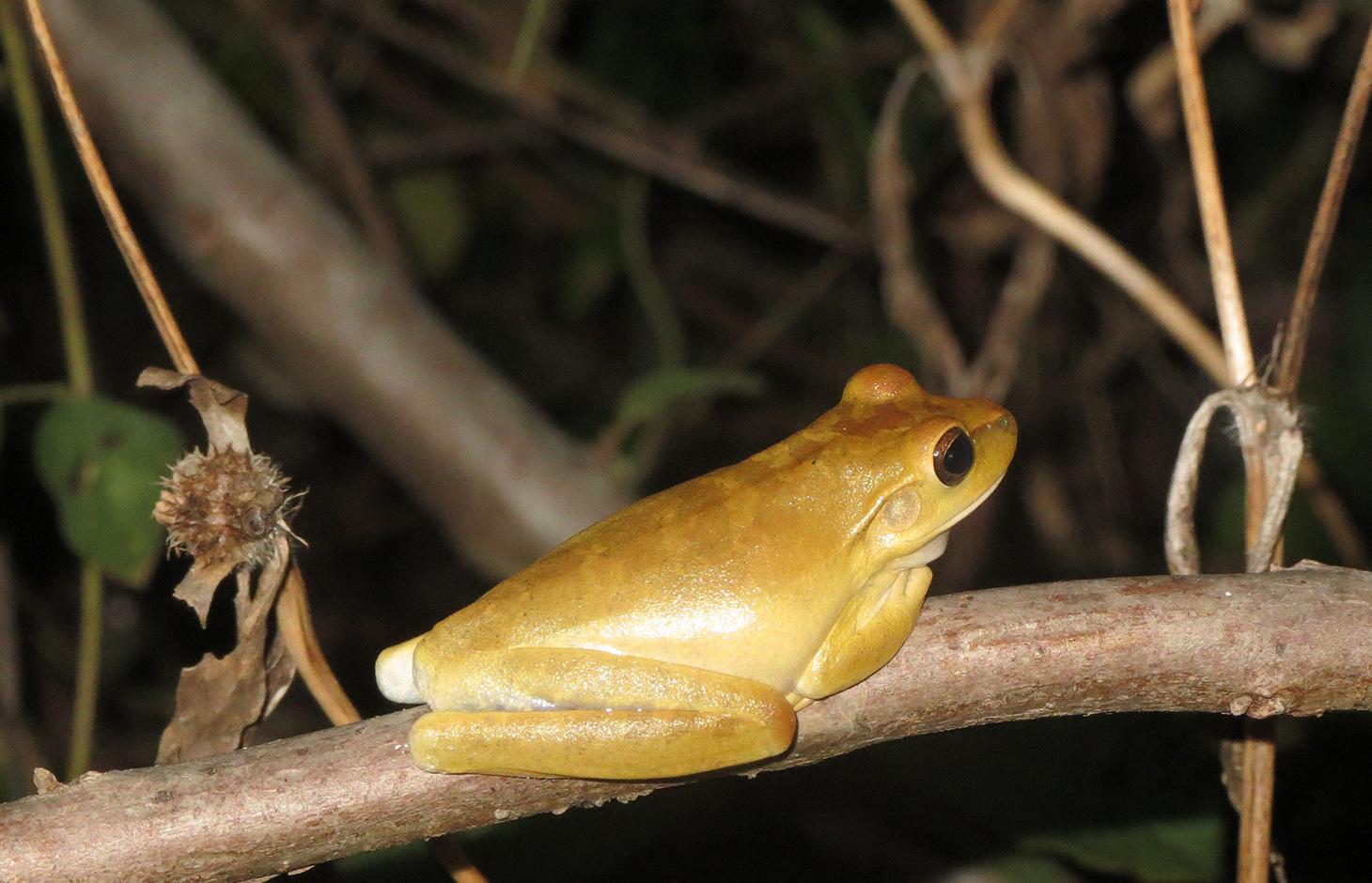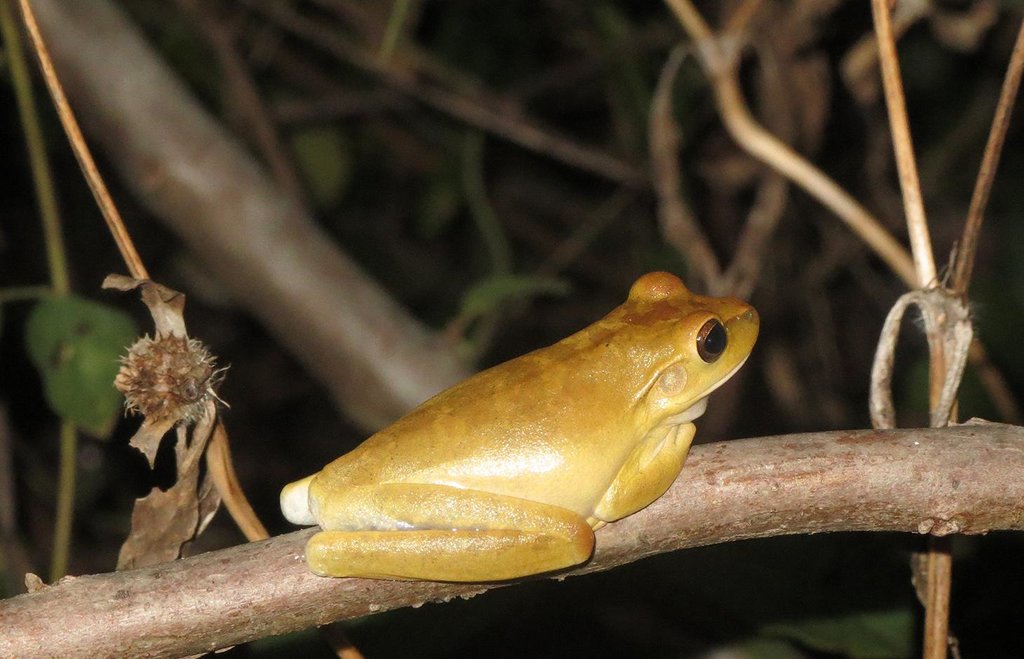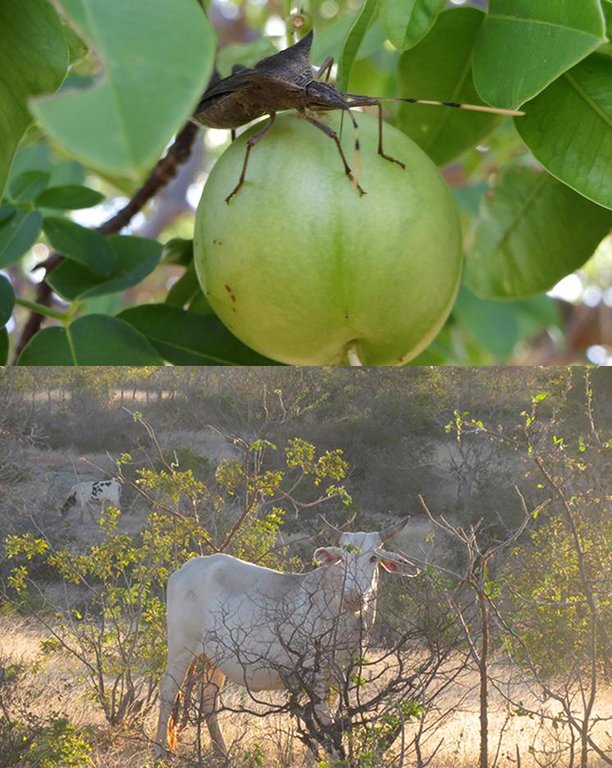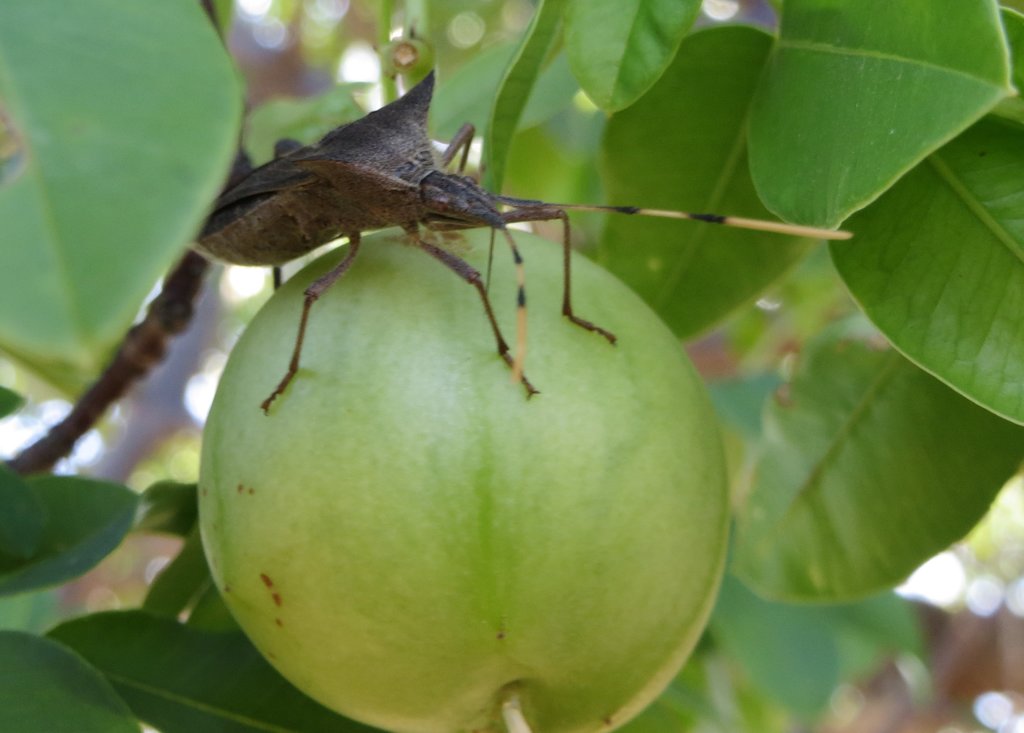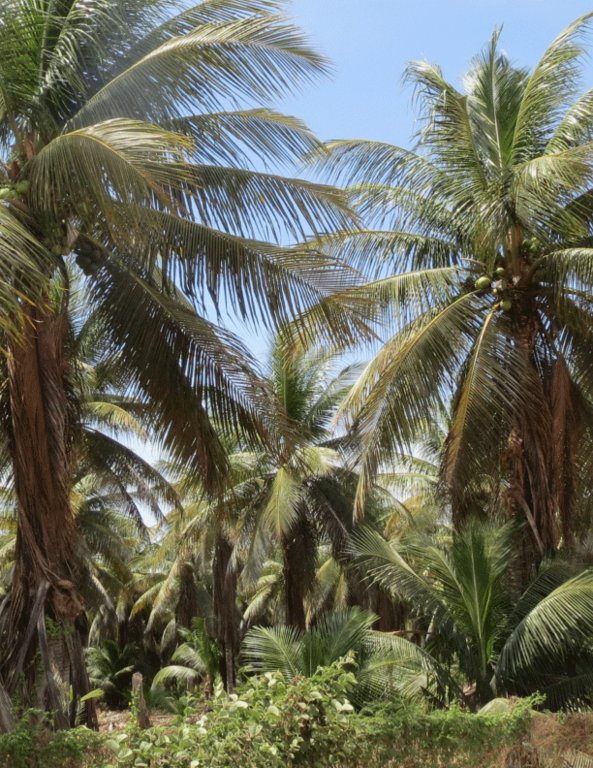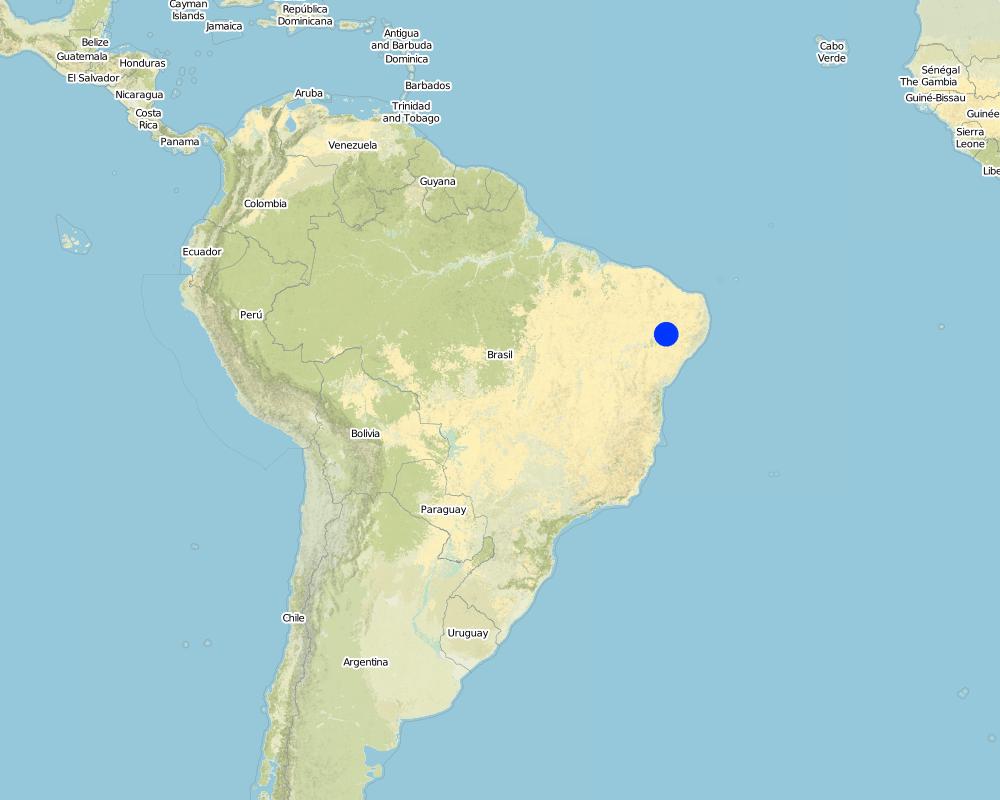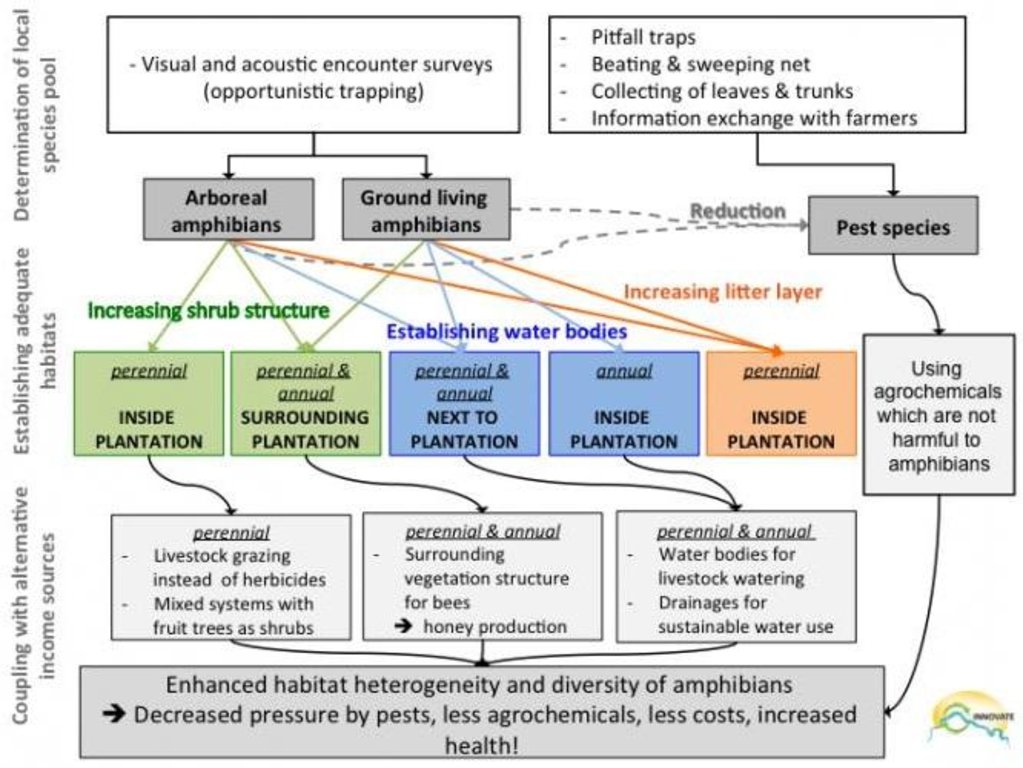Biological pest control through promoting habitats for native fauna [البرازيل]
- تاريخ الإنشاء:
- تحديث:
- جامع المعلومات: Marianna Siegmund-Schultze
- المحرر: –
- المراجعون: Fabian Ottiger, Alexandra Gavilano
Controle biológico de pragas pela fauna nativa: manter ou restabelecer habitats respectivos (Portuguese)
technologies_1293 - البرازيل
عرض الأقسام
توسيع الكل طي الكل1. معلومات عامة
1.2 تفاصيل الاتصال بالأشخاص الرئيسيين لمصدر المعلومات والمؤسسات المشاركة في تقييم وتوثيق التقنية
متخصص في الإدارة المستدامة للأراضي:
Biologist:
Ernst Raffale
Senckenberg Natural History Collections Dresden
Koenigsbruecker Landstr. 159, 01109 Dresden, Germany
ألمانيا
متخصص في الإدارة المستدامة للأراضي:
Hagel Heinrich
heinrich.hagel@uni-hohenheim.de
Universit of Hohenheim
Wollgrasweg 43, D-70599 Stuttgart, Germany
ألمانيا
اسم المشروع الذي سهّل توثيق/تقييم التقنية (إذا كان ذلك على صلة)
Book project: Making sense of research for sustainable land management (GLUES)اسم المؤسسة (المؤسسات) التي سهلت توثيق/تقييم التقنية (إذا كان ذلك على صلة)
Universität Hohenheim - ألمانيااسم المؤسسة (المؤسسات) التي سهلت توثيق/تقييم التقنية (إذا كان ذلك على صلة)
Senckenberg Natural History Collections Dresden - ألمانيااسم المؤسسة (المؤسسات) التي سهلت توثيق/تقييم التقنية (إذا كان ذلك على صلة)
Technische Universität Berlin (Technische Universität Berlin) - ألمانيااسم المؤسسة (المؤسسات) التي سهلت توثيق/تقييم التقنية (إذا كان ذلك على صلة)
Leibniz-Institut für Gewässerökologie und Binnenfischerei (IGB) - ألمانيااسم المؤسسة (المؤسسات) التي سهلت توثيق/تقييم التقنية (إذا كان ذلك على صلة)
Potsdam-Institut für Klimaforschung (PIK) - ألمانيا1.3 الشروط المتعلقة باستخدام البيانات الموثقة من خلال WOCAT
متى تم تجميع البيانات (ميدانيا)؟:
01/01/2014
يوافق جامع المعلومات والشخص (لاشخاص) الرئيسي لمصدر المعلومات على الشروط المتعلقة باستخدام البيانات الموثقة من خلال WOCAT:
نعم
2. وصف تقنيةالإدارة المستدامي للأراضي
2.1 وصف مختصر للتقنية
تعريف التقنية:
Reducing the use of common agrochemicals by supporting preferred habitats of biological pest control agents like amphibians and by using alternative self-made organic pesticides.
2.2 وصف تفصيلي للتقنية
الوصف:
Irrigated crops attract various pest species. Farmers usually address crop pest and disease problems through the use of agrochemicals. Especially bees, birds, and amphibians, which fulfil important functions in agroecosystems, are affected by high use of agrochemicals. The combination of inappropriate irrigation practices, incorrect application rates of agrochemicals, and low producer prices often lead, however, to poor income from smallholder irrigated agriculture and to further problems such as poor health, loss of biodiversity, and soil and water contamination. Amphibians are themselves proven biological pest control agents of arthropod pest species (predators of e.g. larvae of butterflies, beetles, termites, bugs and others) and the incorrect use of agrochemicals, as well as the removal of vegetation along field margins hampers this useful function. The technology described here aims to support and utilise the potential of amphibians (such as frogs and toads) as biocontrol agents –as an alternative to agrochemicals in crops.
Purpose of the Technology: Establishing habitats for amphibians is crucial in order to increase and secure their numbers: for example encouraging shrubby vegetation next to water bodies for arboreal frogs, and installing additional water ponds inside and around plantations for ground-living frogs. First, the local species pool of amphibians needs to be determined by visual and acoustic observations. Amphibian species do not need to be determined precisely, but it is important to detect whether they are arboreal and/or ground-living amphibians, as these two groups have different roles as biocontrol agents. Pests that feed on the main cultivated species should be characterized by (a) collecting plant material to determine the type and quantity of pests and (b) by comparing observations with neighbouring farmers and extension agents. Pest species can be determined also by installing traps and using nets. Inspection should be done at least every 15 days to once a month during the whole rainy season to detect possible mass reproduction of arthropods after rainfall events. Once amphibians and pest species are detected, decisions on management strategies can be made. Such a strategy is to create habitats for amphibians with additional sources of income, e.g. by planting pomegranate or guavas as shrubby vegetation structure for arboreal frogs. If pest species can't be reduced solely by amphibian species, the use of agrochemicals has to be reconsidered. Preference shall be given to chemicals which do not harm amphibians. Organic, self-made pesticides based on the extract of manioc roots (manipoera) seem promising. Twenty litres of manipoera, the bark of manicoba tree (Manihot pseudoglaziovii), a cup of American wormseed (Dysphania ambrosioides), a cup of yellow tagetes (Tagetes sp.), a cup of malagueta pepper (Capsicum sp.), garlic and a little bit of bleach have to be chopped, mixed and fermented for 10 days. Application of the final product (25 ml of organic pesticide diluted in 20 l of water) should be done every 8 to 15 days depending on crop species.
Natural / human environment: Increasing habitat heterogeneity stimulates the diversity of amphibians and so a greater number of pest types will be controlled. Combined control by safeguarding natural amphibian habitats and application of organic pesticides is an innovative alternative to the overuse of toxic agrochemicals.
2.3 صور التقنية
2.5 البلد/المنطقة/المواقع التي تم تنفيذ التقنية فيها والتي يغطيها هذا التقييم
البلد:
البرازيل
المنطقة/الولاية/المحافظة:
Floresta, Itacuruba, Petrolandia
مزيد من التفاصيل حول الموقع:
Brazil, Pernambuco
Map
×2.6 تاريخ التنفيذ
في حالة عدم معرفة السنة بالتحديد، يرجى الإشارة إلى التاريخ التقريبي:
- منذ أكثر من 50 عامًا (تقليدي)
2.7 إدخال التقنية
حدد كيف تم إدخال التقنية:
- أثناء التجارب/الأبحاث
3. تصنيف تقنية الإدارة المستدامي للأراضي
3.2 نوع (أنواع) استخدام الأراضي الحالية حيث يتم تطبيق التقنية

الأراضي الزراعية
- زراعة سنوية
- زراعة معمرة (غير خشبية)
- زراعة الأشجار والشجيرات
المحاصيل الرئيسية (المحاصيل النقدية والغذائية):
Major cash crop annual cropping: Watermelone, onion, beans, parsley, tomato, manioc
Major food crop annual cropping: Watermelone, onion, beans, parsley, tomato, manioc
Major cash crop perennial cropping: passion fruit, grape
Major food crop perennial cropping: passion fruit, grape
Major cash crop tree/shrub cropping: mango, coconut, pomegranat, guava, banana
Major food crop tree/shrub cropping: mango, coconut, pomegranat, guava, banana

مختلطة (محاصيل/ رعي/ أشجار)، بما في ذلك الحراجة الزراعية
- الرعي الزراعي الحرجي
المنتجات / الخدمات الرئيسية:
Main species: Goat and sheep
Types of forest: Selective felling of (semi-) natural forests, clear felling of (semi-) natural forests, plantation forestry and shifting cultivation.
التعليقات:
Major land use problems (compiler’s opinion): Intensive livestock grazing pressure, agriculture and logging of native vegetation are the driving factors behind loss of the Caatinga dry forest. The high use of agrochemicals additionally pollutes soils and watersheds, and probably also decreases local biodiversity. Droughts seem to occur more frequently and these decrease water and food availability for livestock, as well as affecting the local fauna.
Example for establishment of technology within study region: In the irrigation schemes of Petrolândia, Pernambuco, Brazil, the most important arthropod pest species in banana plantation was a weevil (Curculionidae, Coleoptera). The weevil (so called “moleque da bananeira”) attacked the roots of the banana plants, in consequence the plant tumbled down and was lost. As the weevil stays during the day in the ground and only starts moving during the night, it is difficult to combat this pest species by agrochemicals. With an increase of small water ponds with a shore vegetation structure (for example at 2 corners of the plantation) the abundance of ground-living amphibians increases and so the presence of amphibians in the banana plantation which feed on the weevil during the night.
Major land use problems (land users’ perception): Droughts and consequently problems of feeding livestock on natural vegetation (lack of fodder and grazing grounds), deforestation, extensive and inappropriate use of agrochemicals, low producer prices.
Nomadism: goat, sheep, cattle
Semi-nomadism / pastoralism: goat, sheep, cattle
Ranching: goat, sheep, cattle
Cut-and-carry/ zero grazing: goat, sheep, cattle
Improved pasture: goat, sheep, cattle
Mixed: (eg agro-pastoralism, silvo-pastoralism): goat, sheep, cattle
Selective felling of (semi-) natural forests: Yes
Clear felling of (semi-)natural forests: Yes
Shifting cultivation: Yes
Plantation forestry: Yes
Forest products and services: timber, fuelwood, fruits and nuts, grazing / browsing, other forest products / uses (honey, medical, etc.), nature conservation / protection
Livestock is grazing on crop residues
3.3 مزيد من المعلومات حول استخدام الأراضي
عدد مواسم الزراعة في السنة:
- 1
حدد:
Longest growing period from month to month: January to May
3.4 مجموعةالإدارة المستدامة للأراضي التي تنتمي إليها هذه التقنية
- الإدارة المتكاملة للآفات والأمراض (بما في ذلك الزراعة العضوية)
- Biological pest control
3.5 انتشار التقنية
حدد انتشار التقنية:
- منتشرة بالتساوي على مساحة
إذا كانت التقنية منتشرة بالتساوي على منطقة ما، فحدد المنطقة التقريبية المغطاة:
- 0.1-1 كم2
التعليقات:
The technology was carried out both in a forest system as well as in agricultural areas. An incrasing SLM Technology area is linked to an increasing sampling number.
3.6 التدابير التقنية في مجال إلادارة المستدامة للأراضي

التدابير الزراعية
- A1: الغطاء النباتي/التربة

التدابير النباتية
- V1: غطاء من الأشجار والشجيرات
- V2: الأعشاب والنباتات العشبية المعمرة

التدابير البنيوية
- S3: الخنادق المتدرجة ،والقنوات، والممرات المائية
- S5: السدود، الأحواض الصغيرة، البرك

التدابير الإدارية
- M2: تغيير في مستوى الإدارة/الكثافة
التعليقات:
Main measures: agronomic measures, vegetative measures, structural measures, management measures
Type of agronomic measures: retaining more vegetation cover
3.7 الأنواع الرئيسية من تدهور الأراضي التي تناولتها التقنية

التدهور الكيميائي للتربة
- (Cn): تراجع الخصوبة وانخفاض محتوى المادة العضوية (غير ناتج عن الانجراف)

التدهور البيولوجي
- (Bc): تناقص الغطاء النباتي
- (Bh): فقدان الموائل
- (Bs): انخفاض جودة وتركيبة الأنواع/التنوع
- (Bp): زيادة الآفات/الأمراض، وفقدان الحيوانات المفترسة

تدهور المياه
- (Hs): التغيير في كمية المياه السطحية
التعليقات:
Main type of degradation addressed: Bc: reduction of vegetation cover, Bh: loss of habitats, Bs: quality and species composition /diversity decline, Bp: increase of pests / diseases, loss of predators, Hs: change in quantity of surface water
Secondary types of degradation addressed: Cn: fertility decline and reduced organic matter content
Main causes of degradation: crop management (annual, perennial, tree/shrub) (high use of agrochemicals, degradation of natural habitats), deforestation / removal of natural vegetation (incl. forest fires) (high logging and grazing intensity, no forest area without grazing!), overgrazing (high logging and grazing intensity, no forest area without grazing!), change in temperature (droughts become more frequently), change of seasonal rainfall (droughts become more frequently), Heavy / extreme rainfall (intensity/amounts) (less rainfall intensity), droughts (droughts become more frequently)
Secondary causes of degradation: urbanisation and infrastructure development (extending farmlands), population pressure (extending farmlands), poverty / wealth (farmers need to use natural resources as livestock fodder), education, access to knowledge and support services (less environmental awareness)
3.8 منع أو حد أو عكس تدهور الأراضي
التعليقات:
Main goals: prevention of land degradation, mitigation / reduction of land degradation
Secondary goals: rehabilitation / reclamation of denuded land
4. المواصفات الفنية، وأنشطة التنفيذ، والمدخلات، والتكاليف
4.1 الرسم الفني للتقنية
4.2 المواصفات الفنية/شروحات الرسم الفني
Vegetation structures surrounding plantations beside waterbodies guarantee the occurrence of arboreal and ground-living amphibians. Arboreal frogs prefer shrubby vegetation. Since mowing or application of herbicides often eliminates shrubs, moderate livestock grazing might be a better option. The additional water bodies outside the plantation can thereby be used for livestock watering, as long as the surrounding vegetation structure is not eliminated through grazing. Fruit trees such as Guava or Pomegranate as shrub structure provide an additional source of income. To ensure the presence of ground-living frogs, smaller water bodies must be promoted within the plantation. Here puddles from leaky irrigation systems seem to be sufficient already.
Only agrochemicals and organic pesticides that are harmless to amphibians should be used as additional chemical pest control.
Date: 2016
Technical knowledge required for field staff / advisors: moderate (kowledge of habitat preference of important species and management issues)
Technical knowledge required for land users: low (kowledge of habitat preference of important species and management issues)
Main technical functions: increase in nutrient availability (supply, recycling,…), increase of biomass (quantity), promotion of vegetation species and varieties (quality, eg palatable fodder)
Secondary technical functions: control of dispersed runoff: retain / trap, control of dispersed runoff: impede / retard, control of concentrated runoff: retain / trap, control of concentrated runoff: impede / retard, control of concentrated runoff: drain / divert, increase of surface roughness, improvement of surface structure (crusting, sealing), improvement of topsoil structure (compaction), stabilisation of soil (eg by tree roots against land slides), increase in organic matter
Retaining more vegetation cover
Material/ species: herbs in planation of coconut, banana, guave, pomegranat etc.
Quantity/ density: dense
Change of land use practices / intensity level: less grazing in forest areas, less grazing at water ponds (fencing of a certain part of the pond), less cutting of shrubs and herbs in crop plantations (near to natural cutting by livestock)
4.4 أنشطة التأسيس
| النشاط | نوع التدبير | التوقيت | |
|---|---|---|---|
| 1. | Installing of additional small and large water bodies: a. large ponds outside the plantation (~100 m²/pond, ~ 4 ponds/plantation, one working day per pond) b. smaller ponds for ground-living frogs inside the plantation (one working day/ 5 ha). c. drainages can be installed instead of ponds outside the plantation for sustainable water use (machine rent) | بنيوية أو هيكلية | |
| 2. | Planting shrubby vegetation or fruit trees outside and inside the plantation. Planting of Guava trees as shrubby vegetation: 25% density compared to Guava monoculture (e.g. 1.25 working days for exclusive Guava plantation) | بنيوية أو هيكلية | |
| 3. | As irrigation was free in the study region, there were no costs calculated | بنيوية أو هيكلية | |
| 4. | Knapsack sprayer for application of pesticides | بنيوية أو هيكلية |
4.5 التكاليف والمدخلات اللازمة للتأسيس
| تحديد المدخلات | الوحدة | الكمية | التكاليف لكل وحدة | إجمالي التكاليف لكل مدخل | % من التكاليف التي يتحملها مستخدمو الأراضي | |
|---|---|---|---|---|---|---|
| العمالة | Labour | ha | 1,0 | 49,05 | 49,05 | 100,0 |
| معدات | Machine rent | ha | 1,0 | 100,0 | 100,0 | 100,0 |
| معدات | Knapsack sprayer | ha | 1,0 | 90,0 | 90,0 | 100,0 |
| المواد النباتية | Seedlings | ha | 1,0 | 75,0 | 75,0 | 100,0 |
| إجمالي تكاليف إنشاء التقنية | 314,05 | |||||
4.6 الصيانة/الأنشطة المتكررة
| النشاط | نوع التدبير | التوقيت/الوتيرة | |
|---|---|---|---|
| 1. | Monitoring amphibian species at least 3 nights in the rainy season (can be done by the farmer himself) | بنيوية أو هيكلية | |
| 2. | Monitoring of pest species (1 hour/ha) at least every 15 days in the rainy season (5 month/year) and once a month in dry season (7 month/year) (can be done by the farmer himself) | بنيوية أو هيكلية | |
| 3. | Production and application of organic pesticides (25 ml of organic pesticide diluted in 20 l of water and applied every 8 to 15 days). Note: for commercial pesticides the application costs are the same. | بنيوية أو هيكلية | |
| 4. | Application of fertilizer (1 working day/ year) | بنيوية أو هيكلية | |
| 5. | Pruning of trees (5.25 working days(/year) | بنيوية أو هيكلية |
4.7 التكاليف والمدخلات اللازمة للصيانة/للأنشطة المتكررة (سنويًا)
| تحديد المدخلات | الوحدة | الكمية | التكاليف لكل وحدة | إجمالي التكاليف لكل مدخل | % من التكاليف التي يتحملها مستخدمو الأراضي | |
|---|---|---|---|---|---|---|
| العمالة | Labour | ha | 1,0 | 821,75 | 821,75 | 100,0 |
| إجمالي تكاليف صيانة التقنية | 821,75 | |||||
التعليقات:
To calculate the above example a scenario with maximum activities was taken. Any other scenario will be cheaper. Prices are from the year 2013. Real 1 = USD 0.3.. A total of 6 liters of concentrated organic pesticides per hectare per year are needed. This applies for both self-made and commercial pesticides. As commercial organic pesticides cost about USD 36 per liter, farmers spend USD 216 less per year for self-produced organic pesticides. Similarly commercial non-organic pesticides are more expensive compared to self-made organic pesticides. An additional income of USD 120 / ha / harvest were estimated for guava trees even under possible poor conditions like shadow and extensive management. Other additional sources of income are from the sale of self-produced organic pesticides and livestock grazing instead of using herbicides.
5. البيئة الطبيعية والبشرية
5.1 المناخ
هطول الأمطار السنوي
- < 250 مم
- 251- 500 ملم
- 501 - 750ملم
- 1,000-751 ملم
- 1,500-1,100 ملم
- 2,000-1,500 ملم
- 3,000-2,001 ملم
- 4,000-3,100 ملم
- > 4000 ملم
المواصفات/التعليقات على هطول الأمطار:
8 month of drought , 4 months of rain
المنطقة المناخية الزراعية
- شبه قاحلة
Thermal climate class: tropics
5.2 طوبوغرافيا
متوسط الانحدارات:
- مسطح (0-2%)
- بسيط (3-5%)
- معتدل (6-10%)
- متدحرج (11-15%)
- تلال (16-30%)
- شديدة الانحدار(31-60%)
- فائقة الانحدار (>60%)
التضاريس:
- هضاب/سهول
- أثلام مرتفعة
- المنحدرات الجبلية
- منحدرات التلال
- منحدرات في السفوح
- قاع الوادي
المنطقة الارتفاعية:
- 100-0 متر فوق سطح البحر
- 500-101 متر فوق سطح البحر
- 1,000-501 متر فوق سطح البحر
- 1,500-1,001 متر فوق سطح البحر
- 2,000-1,501 متر فوق سطح البحر
- 2,500-2,100 متر فوق سطح البحر
- 3,000-2,501 متر فوق سطح البحر
- 4,000-3,001 متر فوق سطح البحر
- > 4000 متر فوق سطح البحر
التعليقات والمواصفات الإضافية بشأن التضاريس:
Slopes on average: gentle (3-5%), moderate (6-10%), rolling (11-15%), hilly (16-30%)
5.3 التربة
متوسط عمق التربة:
- ضحل جدًا (0-20 سم)
- ضحلة (21-50 سم)
- متوسطة العمق (51-80 سم)
- عميقة (81-120 سم)
- عميقة جدًا (> 120 سم)
قوام التربة (التربة السطحية):
- خشن / خفيف (رملي)
المواد العضوية في التربة السطحية:
- متوسطة (1-3%)
- منخفضة (<1%)
إذا كان متاحًا، قم بإرفاق وصف كامل للتربة أو تحديد المعلومات المتوفرة، على سبيل المثال نوع التربة، الرقم الهيدروجيني/ درجة حموضة التربة، قدرة التبادل الكاتيوني، النيتروجين، الملوحة وما إلى ذلك.
Soil fertility is: Very low-low
Soil drainage/infiltration is: Poor-medium
Soil water storage capacity: Very low-low
5.4 توافر المياه ونوعيتها
منسوب المياه الجوفية:
> 50 م
توافر المياه السطحية:
ضعيف/ غير متوافر
نوعية المياه (غير المعالجة):
مياه الشرب سيئة (تتطلب معالجة)
5.5 التنوع البيولوجي
التعليقات والمواصفات الإضافية بشأن التنوع البيولوجي:
Species diversity: medium, low
Species richness of the study region depended strongly on habitat heterogeneity.
5.6 خصائص مستخدمي الأراضي الذين يطبقون التقنية
الدخل من خارج المزرعة:
- 10-50% من جميع الإيرادات
المستوى النسبي للثروة:
- متوسط
أفراداً أو مجموعات:
- فرد/أسرة معيشية
مستوى المكننة:
- عمل يدوي
- الجر الحيواني
الجنس:
- نساء
- رجال
اذكر الخصائص الأخرى ذات الصلة لمستخدمي الأراضي:
Land users applying the Technology are mainly common / average land users
Population density: 10-50 persons/km2
Annual population growth: 1% - 2%
Off-farm income specification: the same, there are just single farmers who use the technology till now
Market orientation of production system: subsistence (self-supply), subsistence (self-supply), subsistence (self-supply), mixed (subsistence/ commercial, mixed (subsistence/ commercial, commercial/ market, commercial/ market
5.7 متوسط مساحة الأرض المملوكة أو المستأجرة من قبل مستخدمي الأراضي الذين يطبقون التقنية
- < 0.5 هكتارا
- 0.5 - 1 هكتار
- 1 -2 هكتار
- 2 - 5 هكتار
- 5 - 15 هكتار
- 15 - 50 هكتار
- 50 - 100هكتار
- 500-100 هكتار
- 1,000-500 هكتار
- 10,000-1,000 هكتار
- > 10,000 هكتار
هل يعتبر هذا نطاقًا صغيرًا أو متوسطًا أو واسعا (في إشارة إلى السياق المحلي)؟:
- على نطاق متوسط
التعليقات:
Average area of land owned or leased by land users applying the Technology: < 0.5 ha, 0.5-1 ha, 1-2 ha, 2-5 ha
5.8 ملكية الأراضي، وحقوق استخدام الأراضي، وحقوق استخدام المياه
ملكية الارض:
- دولة
حقوق استخدام الأراضي:
- فردي
- official registration and permission
- official registration and permission
5.9 الوصول إلى الخدمات والبنية التحتية
الصحة:
- ضعيف
- معتدل
- جيد
التعليم:
- ضعيف
- معتدل
- جيد
المساعدة التقنية:
- ضعيف
- معتدل
- جيد
العمل (على سبيل المثال خارج المزرعة):
- ضعيف
- معتدل
- جيد
الأسواق:
- ضعيف
- معتدل
- جيد
الطاقة:
- ضعيف
- معتدل
- جيد
الطرق والنقل:
- ضعيف
- معتدل
- جيد
مياه الشرب وخدمات الصرف الصحي:
- ضعيف
- معتدل
- جيد
الخدمات المالية:
- ضعيف
- معتدل
- جيد
6. الآثار والتصريحات الختامية
6.1 الآثار التي أظهرتها التقنية في الموقع
الآثار الاجتماعية والاقتصادية
الإنتاج
إنتاج المحاصيل
إنتاج الأعلاف
إنتاج حيواني
منطقة الإنتاج
الدخل والتكاليف
النفقات على المدخلات الزراعية
تنوع مصادر الدخل
الآثار الاجتماعية والثقافية
الوضع الصحي
التعليقات/ حدد:
Reduced pesticide toxic effect on human health
Improved livelihoods and human well-being
التعليقات/ حدد:
Less use of agrochemicals
الآثار الايكولوجية
التنوع البيولوجي: الغطاء النباتي، الحيوانات
التنوع النباتي
التنوع الحيواني
تنوع الموائل
مكافحة الآفات/الأمراض
6.2 الآثار التي أظهرتها التقنية خارج الموقع
الفيضان في اتجاه مجرى النهر
6.3 تعرض التقنية وحساسيتها لتغير المناخ التدريجي والظواهر المتطرفة/الكوارث المرتبطة بالمناخ (كما يراها مستخدمو الأراضي)
تغير مناخ تدريجي
تغير مناخ تدريجي
| الموسم | نوع التغير المناخي/ المتطرف | كيف تتعامل التقنية مع ذلك؟ | |
|---|---|---|---|
| درجة الحرارة السنوية | زيادة | جيدا |
الظواهر المتطرفة / الكوارث المرتبطة بالمناخ
الكوارث الجوية
| كيف تتعامل التقنية مع ذلك؟ | |
|---|---|
| عاصفة ممطرة محلية | ليس جيدا |
| عاصفة هوائية محلية | جيدا |
الكوارث المناخية
| كيف تتعامل التقنية مع ذلك؟ | |
|---|---|
| جفاف | ليس جيدا |
الكوارث الهيدرولوجية
| كيف تتعامل التقنية مع ذلك؟ | |
|---|---|
| فيضان عام (نهر) | جيدا |
العواقب الأخرى المتعلقة بالمناخ
العواقب الأخرى المتعلقة بالمناخ
| كيف تتعامل التقنية مع ذلك؟ | |
|---|---|
| انخفاض فترة النمو | جيدا |
التعليقات:
As amphibians depend in their abundance and species composition on the rainfall amount and intensity the technology is sensitive for changing rainfall events by increasing abundance of amphibians with higher rainfall amount and so probably a better pest control.
In case of frequent droughts, reptiles like lizards get more important as they do not depend so strong on rainfall events like amphibians.
6.4 تحليل التكلفة والعائد
كيف يمكن مقارنة العوائد نسبة لتكاليف الإنشاء (من وجهة نظر مستخدمي الأراضي)؟
عوائد قصيرة الأجل:
سلبي
عوائد طويلة الأجل:
إيجابي
كيف تتم مقارنة العوائدمع كلفة الصيانة/التكاليف المتكررة (من وجهة نظر مستخدمي الأراضي)؟
عوائد قصيرة الأجل:
سلبي قليلا
عوائد طويلة الأجل:
إيجابي
6.5 اعتماد التقنية
التعليقات:
There is no trend towards spontaneous adoption of the Technology
Comments on adoption trend: Technology is still in the testing phase and it is too early to give any data on acceptance or adoption
6.7 نقاط القوة / المزايا / الفرص التي توفرها التقنية
| نقاط القوة/ المزايا/ الفرص من وجهة نظر جامع المعلومات أو غيره من الاشخاص الرئيسيين لمصدر المعلومات |
|---|
|
A strong advantage is the low cost of this ecosystem service which is provided almost freely to farmers, especially when the potential for pest control (abundancy of useful amphibians) is high enough to eliminate the need for agrochemicals. How can they be sustained / enhanced? Establish adequate habitats to maintain high diversity of the relevant reptiles and amphibians. |
|
Less use of agrochemicals results in a healthier environment for producers and consumers How can they be sustained / enhanced? If the potential of the reptiles and amphibians is not high enough to combat all pest species, organic chemicals or alternative biocontrol species could be used (for example horntails etc.). |
|
Changing monoculture to mixed systems - or even agropastoral systems - offers additional income sources, while diversification often as a buffer to sudden drops in the price of a particular crop How can they be sustained / enhanced? The crop mixture needs to be well designed, to ensure that the harvests of important crops are not affected too much, and the reduction compensated for by the others. |
6.8 نقاط ضعف / مساوىء / مخاطر التقنية وسبل التغلب عليها
| نقاط الضعف/ المساوىء/ المخاطر من وجهة نظر جامع المعلومات أو غيره من الاشخاص الرئيسيين لمصدر المعلومات | كيف يمكن التغلب عليها؟ |
|---|---|
| Droughts and limited water availability influence species richness of amphibians. | Providing sufficient water bodies for amphibians to outwear heavy droughts is recommended. |
7. المراجع والروابط
7.2 المراجع للمنشورات المتاحة
العنوان، المؤلف، السنة، النظام القياسي الدولي لترقيم الكتب ISBN:
): Guschal & Hagel et al. Benefits of site-adapted management (pest-control) innovations in northeastern Brazil.
متاح من أين؟كم التكلفة؟:
In preparation
الروابط والوحدات المواضيعية
توسيع الكل طي الكلالروابط
لا يوجد روابط
الوحدات المواضيعية
لا يوجد وحدات مواضيعية


